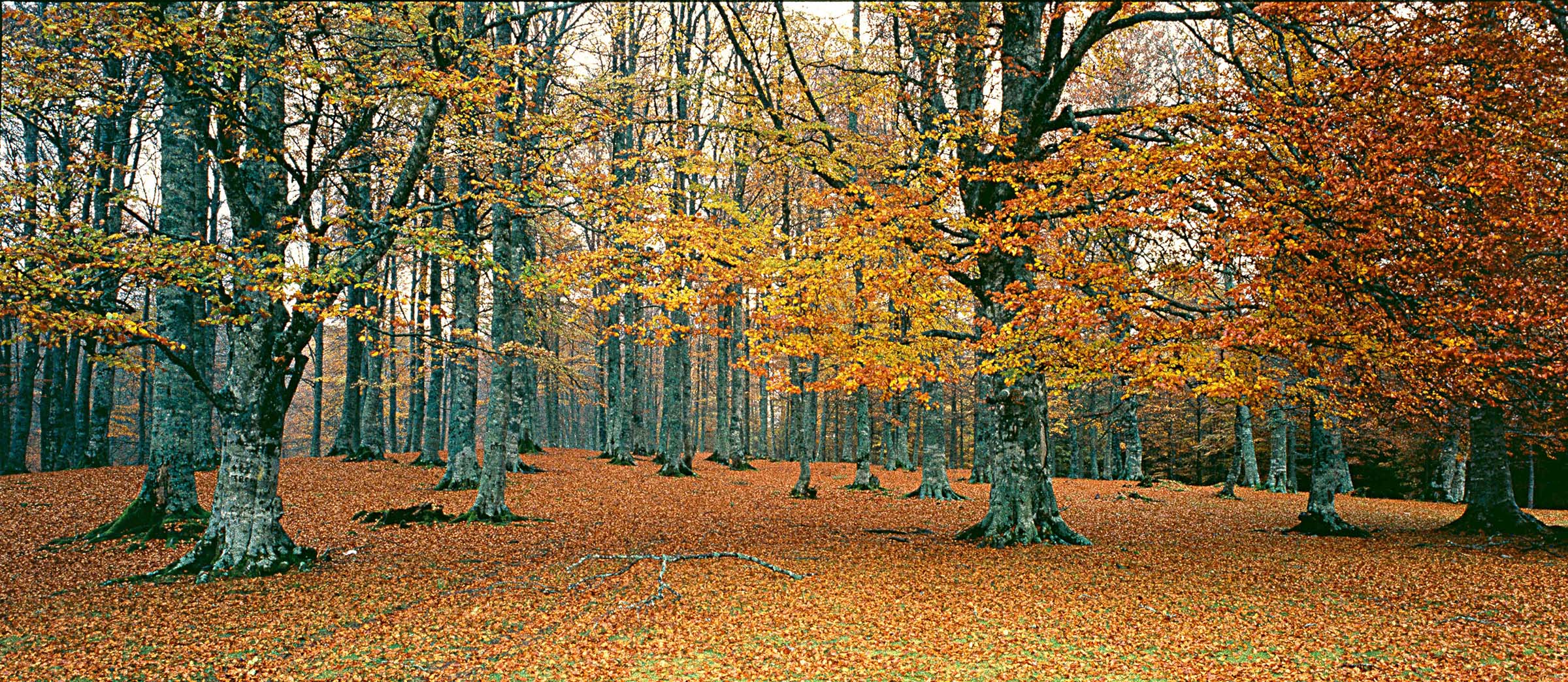
Aralar and the Ulzama Valley Route
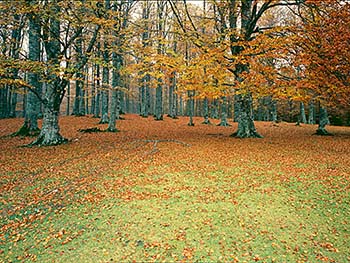
THE SIERRA DE ARALAR AND THE ULZAMA VALLEY: San Miguel de Aralar- Source of the river Larráun – Oak wood at Orgi
The beauty of this area is spectacular. You will yet again be struck by the greenness of the Humid area of Navarre and the charm of the small farming villages.
In the Aralar Sierra the wild splendour of the mountain peaks, complete with more than 60 dolmens, blends with the leafiness of the woods. In the Ulzama valley the scenery is softer and the meadows and valleys create a sensation of peace that is difficult to equal.
The Gorges Route
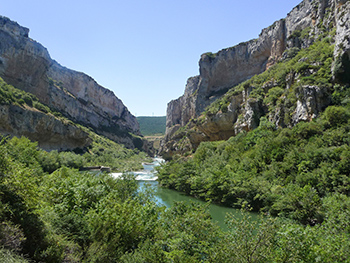
THE LUMBIER AND ARBAIUN GORGES
In the Lumbier and Arbaiun Gorges, you can feel the force of Nature. You will be struck by the power of the water and the erosion which, over millions of years, has managed to carve these ravines in the mountain.
They are inaccessible spots with vertical walls, deep rivers, rocky places furrowed with cracks and caves, the refuge of many animals and birds. The griffin vulture, bearded vulture, hawks and kites predominate.
Atlantic Pyrenees Route
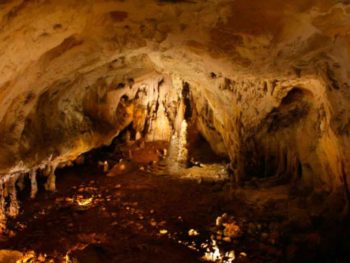
ATLANTIC PYRENEES: Señorio de Bértiz – Elizondo – Caves of Urdax – Caves of Zugarramurdi
In the Baztan valley, the magic that is typical of the North of Navarre crowns some fascinating scenery, villages full of simplicity and with an extraordinary gastronomy. The richness of its always green extensive pasturelands are reflected in the cattle of this idyllic spot. The oaks and beeches predominate in the leafy woods. The mountains gradually drop in height as they approach the Bay of Biscay.
The Baztan Valley, where it frequently rains, is noted for the greenness of its scenery.
Eastern Pyrenees Route
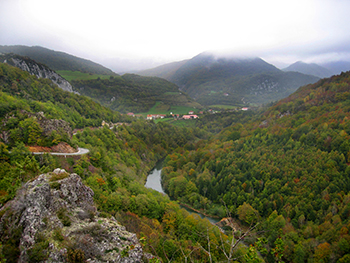
EASTERN PYRENEES: RONCESVALLES-IRATI
This gives you a chance to go along part of the Way of St James, although in the opposite direction. The Way of St James in Spain starts from this fascinating set of monuments. It is a route immersed in the beauty of the leafy green scenery and the hospitality of the lovely villages along the way.
Ribera Route
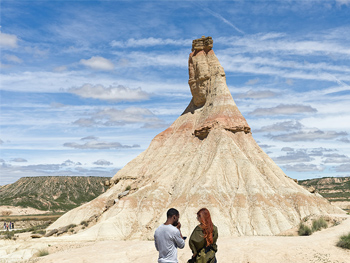
THE BARDENAS
If Navarre is a land of contrasts, the Bardenas are the most far reaching contrast of all. A desert right in the middle of the northern peninsular, a small part of the Sahara changed by erosion, which brings to mind scenes of wild west gunmen fighting bandits. The Bardenas, a historic territory and cattle track, is sure to make an impact on you. It is greatly affected by erosion with changing hills, hillocks and gullies, accentuated still more by the north winds in winter winter, the torrential rains and the hot summers.
Estella Land Route
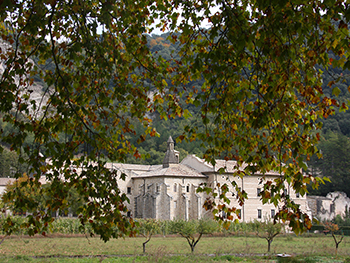
THE ESTELLA AREA: Monastery of Irantzu – Source of the river Urederra – Estella – Puente la Reina – Obanos – Hermitage of Eunate
The area of Estella is the symbol of historic localities, exquisite wines and the harmony of the Urbasa and Andía Sierras, with one peculiarity: both Sierras are common property that is, any one from Navarre can use them free of charge and, on request, will receive his/her lot of firewood.
Roncal and Salazar Valleys Route
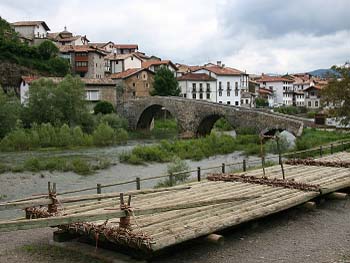
RONCAL AND SALAZAR VALLEYS
These are valleys of steep escarpments wrapped in mist and snow, 2000 metre high summits, all accompanied by an intoxicating greenness, tangled woods and the clear water of its rivers. In the Roncal and Salazar valleys, man lives in harmony with Nature. The Pyrenean villages are in the form of stone country houses, hip or ridged roofs, timber framework and beams, paved streets…
Eastern Central Area Route
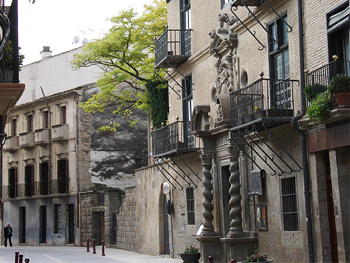
EASTERN CENTRAL AREA: Sangüesa – SOS del Rey Católico – Javier – Yesa – Monastery of Leire
Leave Pamplona by the Zaragoza-Madrid road, and at km 6.8 turn off towards Huesca and Jaca. You are now going towards the zone in Navarre with the greatest number of areas with the European Nature Reserve qualification. In this area, Nature mixes with the historic, monumental and architectural stamp of Man, in the villages and, of course, in the Artificial Reservoir of Yesa or the Sea of the Pyrenees.
Central Area Route
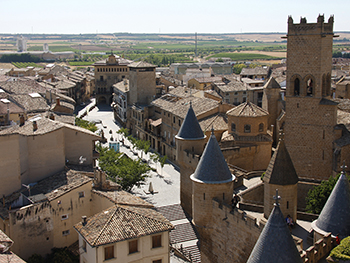
CENTRAL AREA: Mendigorría – Artajona – Olite – San Martín de Unx – Guerinda WindFarm – Ujué
The Central Area – is neither the mountainous North nor the Ribera, or Ebro Valley, in the South. It is the result of bringing these contrasts together, of a quarrel between two opposing brothers who finally make their peace. The woods of the North disappear and are replaced by farmland and vineyards, the mountains soften out and are surrounded by plains and the arid areas are interspersed with thickets and scattered woodland.







